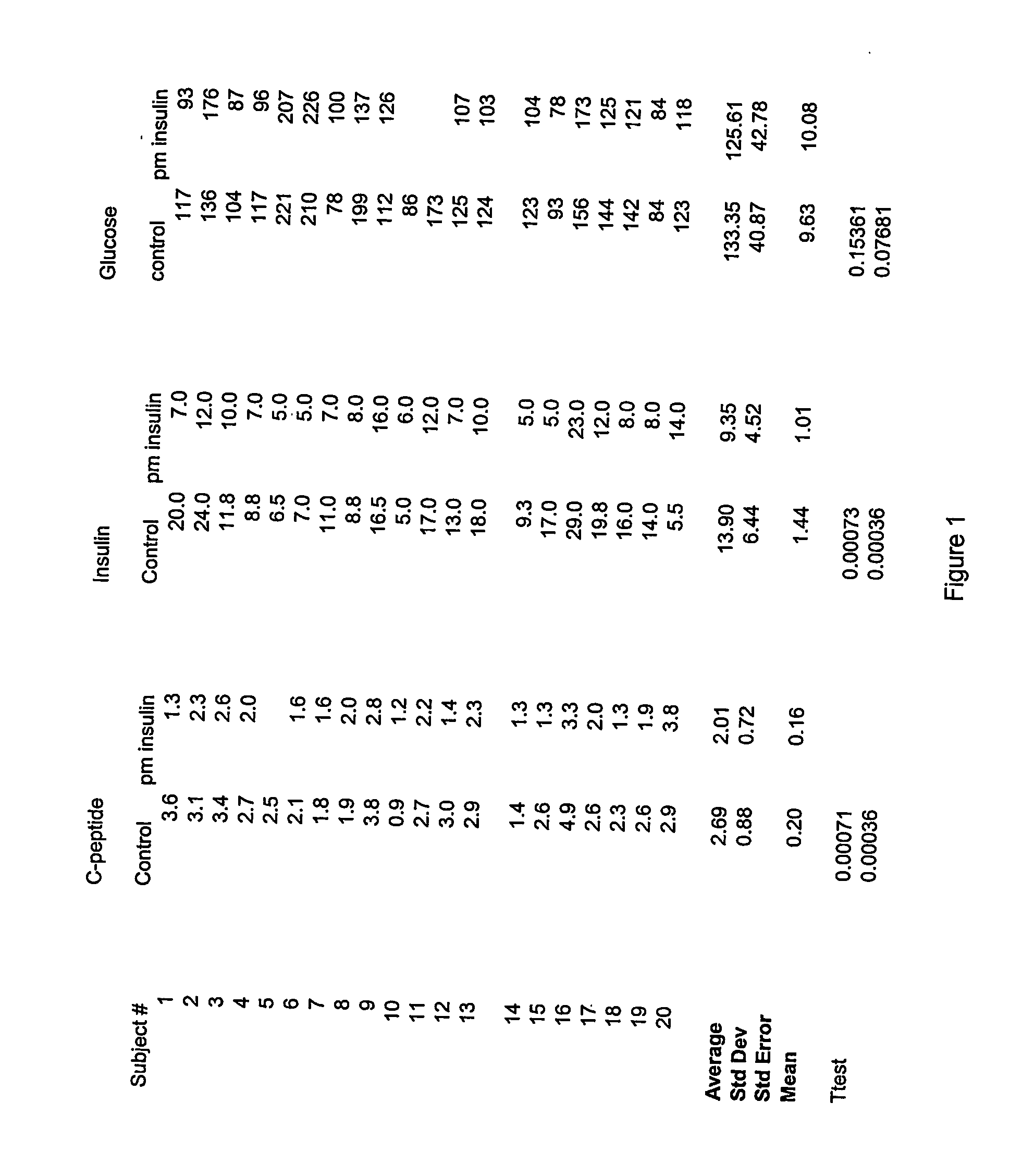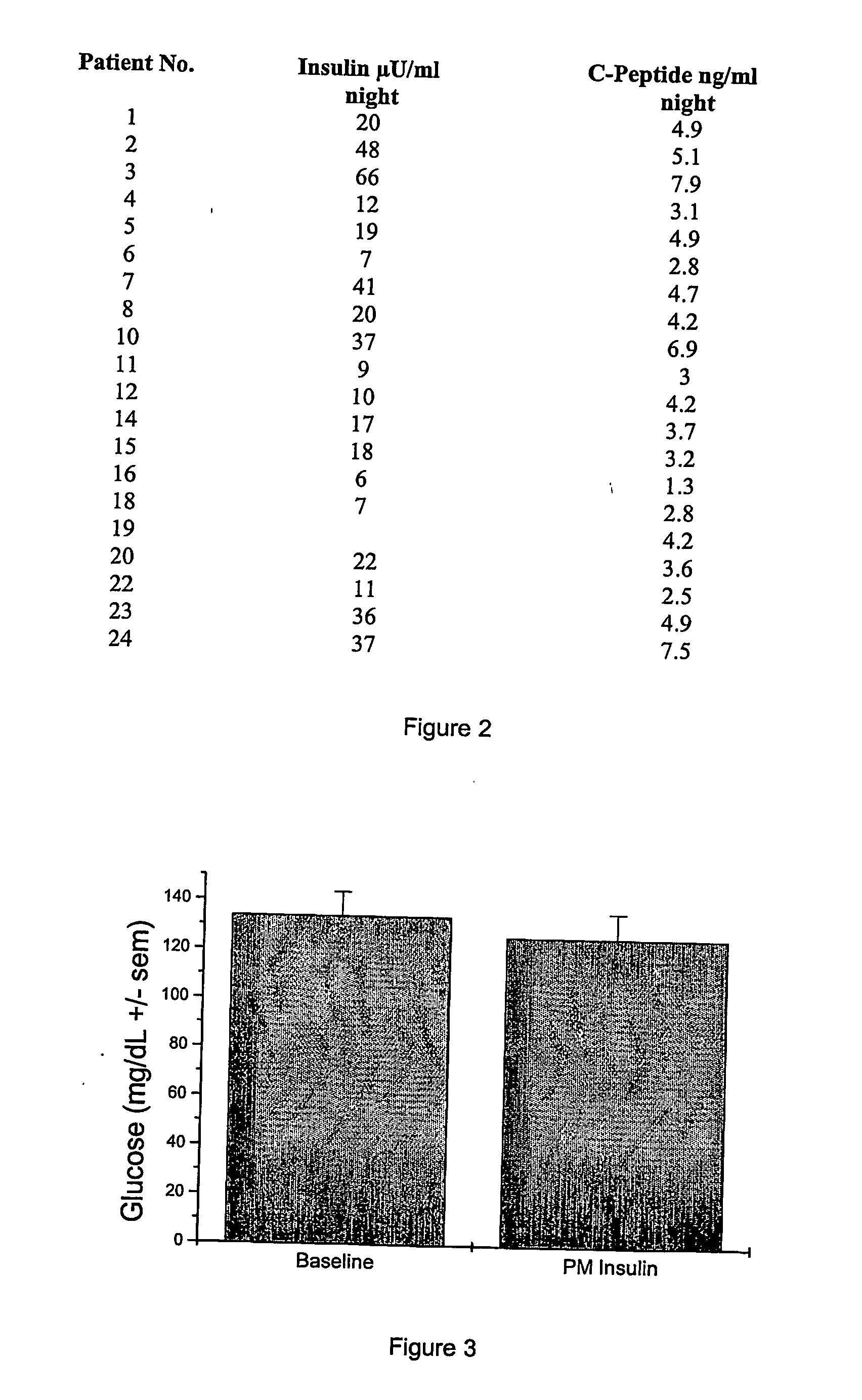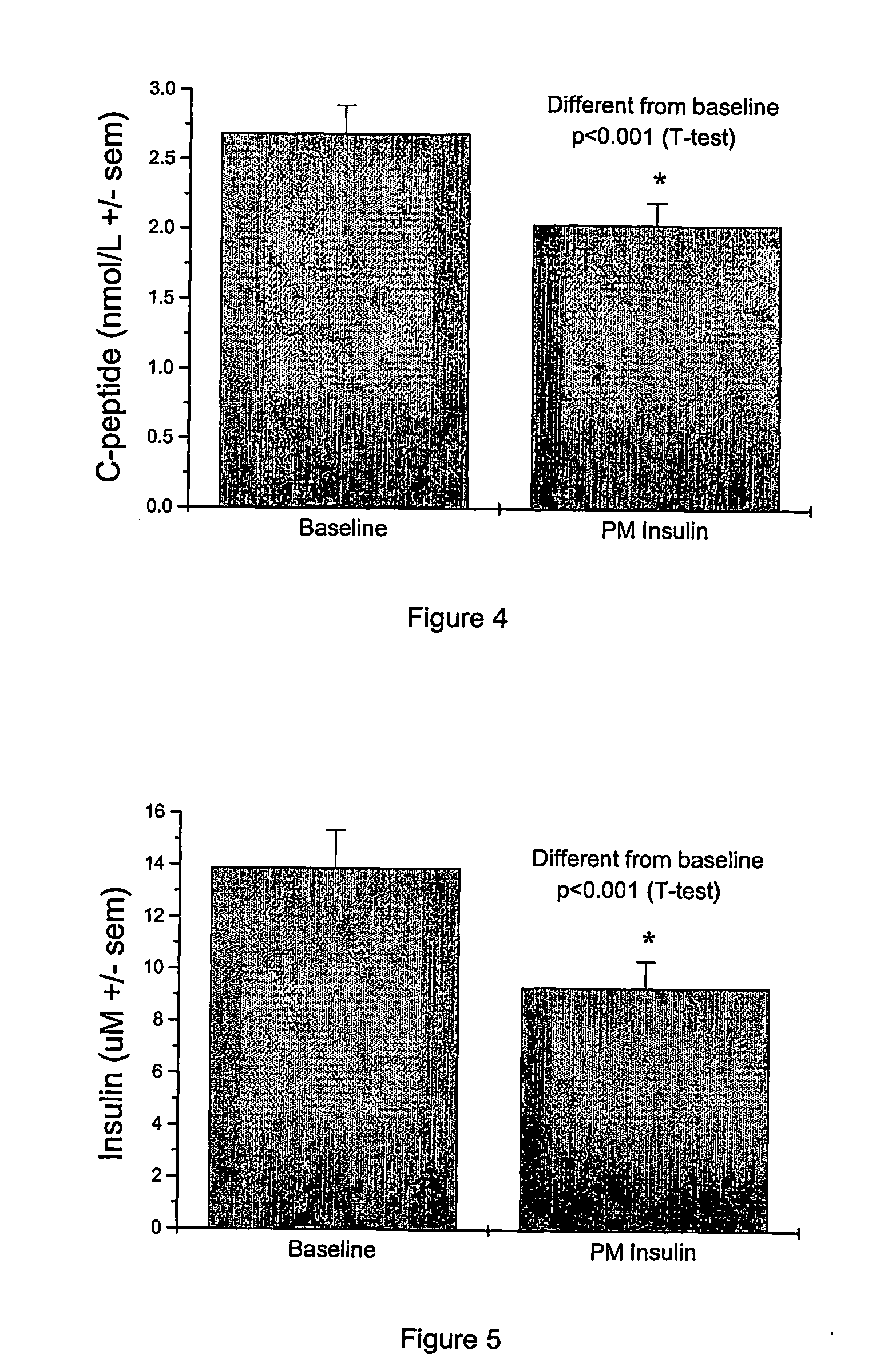Night-time oral insulin therapy
a technology of oral insulin and night-time delivery, which is applied in the direction of peptide/protein ingredients, extracellular fluid disorder, metabolic disorder, etc., can solve the problems of limited expression of glucokinase, many obstacles to successful oral delivery of biological macromolecules, and many limitations in the use of biological macromolecules as active agents in pharmaceutical compositions, so as to facilitate insulin transport, prevent beta cell death or dysfunction, and long-term protection of a mammal
- Summary
- Abstract
- Description
- Claims
- Application Information
AI Technical Summary
Benefits of technology
Problems solved by technology
Method used
Image
Examples
example 1
Preparation of the Delivery Agent 4-CNAB
[0155] The compound corresponding to the following structure may be prepared as described below:
[0156] 4-Chlorosalicylic acid (10.0 g, 0.0579 mol) was added to a one-neck 250 ml round-bottomed flask containing about 50 ml methylene chloride. Stirring was begun and continued for the remainder of the reaction. The coupling agent 1,1-carbonyldiimidazole (9.39 g, 0.0579 mol) was added as a solid in portions to the flask. The reaction was stirred at room temperature for approximately 20 minutes after all of the coupling agent had been added and then ethyl-4-aminobutyrate hydrochloride (9.7 g, 0.0579 mol) was added to the flask with stirring. Next, triethylamine (10.49 ml, 0.0752 mol) was added dropwise from an addition funnel. The addition funnel was rinsed with methylene chloride. The reaction was allowed to stir at room temperature overnight.
[0157] The reaction was poured into a separatory funnel and washed with 2N HCl and an emulsion formed...
example 2
Previous Non-clinical Studies with 4-CNAB and Insulin / 4-CNAB
[0166] The present invention comprising compositions of insulin and the delivery agent 4-CNAB was evaluated for safety and toxicity in a non-clinical program that included pharmacological screening, pharmacokinetic profiling, and toxicity assessments in rats and monkeys. In general, animal physiological responses to 4-CNAB alone and to Insulin / 4-CNAB were comparable. Pharmacokinetic studies in mice, rats and monkeys have shown that 4-CNAB is absorbed rapidly following oral administration, and subsequently cleared from the body. 4-CNAB did not demonstrate potential activity in any of the primary molecular targets evaluated in receptor binding screening assays. Four genotoxicity studies have been conducted with 4-CNAB, with no positive findings. Based on 14-day oral repeated dose toxicity studies, the NOAEL (No-Adverse Effect Level) was estimated to be 500 mg / kg in Sprague-Dawley rats, and 400 mg / kg in rhesus monkeys.
[0167...
example 3
[0170] This example describes the procedure for preparing Insulin / 4-CNAB capsules. The 4-CNAB as prepared above was first screened through a 35 mesh screen. The required amount of the screened 4-CNAB was weighed and was kept in a covered weighing boat. The required amount of insulin was weighed and was kept in a covered weighing boat.
[0171] The insulin from above was screened through the 35 mesh screen onto the same mortar, and approximately 2.0 grams of the 4-CNAB from above was screened on top of the insulin using the same 35 mesh screen. The contents of the mortar was mixed by light trituration for about 3 minutes with a glass mortar, with a spatula used for scraping, as necessary. The 4-CNAB from above was continued to be screened through the same 35 mesh screen in small portions equivalent to the volume of material in the mortar. After each addition, the contents of the mortar were mixed for about 3 minutes.
[0172] After the final addition, the contents of the mortar was mixed...
PUM
| Property | Measurement | Unit |
|---|---|---|
| total weight | aaaaa | aaaaa |
| concentration Cmax | aaaaa | aaaaa |
| concentration | aaaaa | aaaaa |
Abstract
Description
Claims
Application Information
 Login to View More
Login to View More - R&D
- Intellectual Property
- Life Sciences
- Materials
- Tech Scout
- Unparalleled Data Quality
- Higher Quality Content
- 60% Fewer Hallucinations
Browse by: Latest US Patents, China's latest patents, Technical Efficacy Thesaurus, Application Domain, Technology Topic, Popular Technical Reports.
© 2025 PatSnap. All rights reserved.Legal|Privacy policy|Modern Slavery Act Transparency Statement|Sitemap|About US| Contact US: help@patsnap.com



